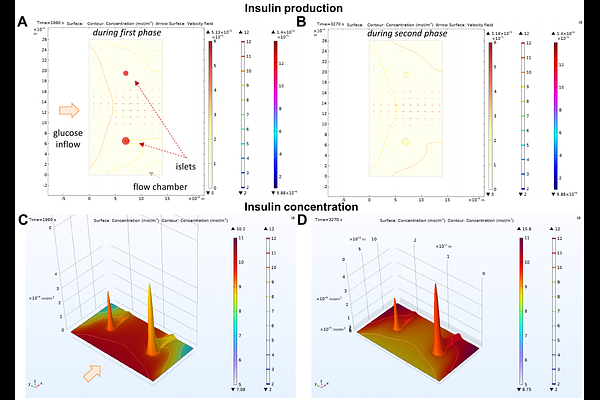Assessing the Rate-Dependence of the First Phase of Glucose-Stimulated Insulin Secretion: Dynamic Perifusion Studies with Isolated Human Pancreatic Islets

Assessing the Rate-Dependence of the First Phase of Glucose-Stimulated Insulin Secretion: Dynamic Perifusion Studies with Isolated Human Pancreatic Islets
Buchwald, P.; Chuang, S.-T.; Watts, B.; Alcazar, O.
AbstractInsulin released in response to a stepwise increase in glucose (square wave) is biphasic with a transient first-phase peak of 5-10 min and a more sustained second phase. While it is usually assumed that the first phase is rate- and the second is concentration-dependent, there are no detailed investigations into the rate-sensitivity of the first phase. We performed dynamic perifusion studies with isolated human pancreatic islets in a system that allowed fully customizable glucose ramps and established the corresponding insulin secretion time-profiles with high (once-a-minute) time-resolution. We considered the first-phase release to be the excess amount of insulin in addition to what would be expected from the glucose concentration-dependent second-phase release and examined its dependence on the glucose gradient (rate of increase). The average first-phase insulin release rate calculated this way increased with the gradient and could be fitted well with a Hill-type sigmoid function having a half-maximal value around 1.25 mM/min (nHill=1.8, r2=0.96). This agrees well with our previously introduced glucose-insulin control system built on a general framework of a sigmoid proportional-integral-derivative ({sigma}PID) controller, a generalized PID controller more suitable for biological systems than classic linear ones as biological responses are always limited between zero and a possible maximum. Experimental results obtained here were used to slightly readjust the parameters of this local glucose concentration-based computational model resulting in predictions in good agreement with measured first- and second-phase insulin secretions (r2>0.90). Thus, glucose-stimulated insulin secretion (GSIS) of perifused human islets can be described well as the sum of a rate-sensitive first phase, which is a sigmoid function of the glucose gradient with half-maximal value around 1.25 mM/min, and a concentration-sensitive second phase, which is a sigmoid function of the glucose concentration with half-maximal value around 8 mM.